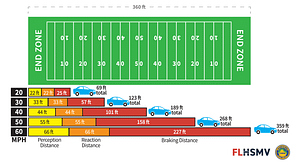
Dear Ms. Smartphone: I saw signs on the highway (in Mass) saying phones must now be hands-free. Is this really necessary or is this just another dumb law? I have an older phone and an older car and I don’t see the need for this myself. Omar, Georgetown
Dear Omar: Think about it this way: if you have surgery you hope that the doctors are not talking on cellular phones or reading the newspaper when they operate. They will be paying full attention to what they are doing. The National Safety Council reminds us that driving requires all of your attention and uses all of your senses. In both cases, there is a life at stake, your own.
That said, so many drivers use smartphones while they drive. The AAA Traffic Safety Culture Index for 2018 found that about 52 percent of motorists had recently talked on a handheld cellphone, 41 percent had read a message and 32 percent had typed or sent a message.
The Three Sins of Sims:
There are three ways that the smartphone can distract you in the car. The first is obvious: Manual distraction occurs when you need to reach for the phone, fumble with it, or press in numbers. Many states, like yours, have bans. Then there is visual distraction, like taking your eyes off the road so that you can read a text or type in a number. It goes hand-in-hand (pun intended) with manual distraction. Finally, there is cognitive distraction, which most drivers seem to attribute to the other drivers on the road, not to themselves.
Distraction 101
According to the NHTSA, phone conversations of any type increase reaction time and increase variations in speed, lane deviations, and steering wheel control.
When conversing on a mobile device, either hand held or hands free, drivers increase their risk of a crash two to four times.
Drivers talking on hands-free cell phones miss visual cues critical to safety and navigation. Their divided attention leads them to miss exists, go through red lights and stop signs and ignore important navigational signage.
And a twist of the Wrist…
To be compliant with the new law, you will probably need to mount the phone on or near the dashboard, assuming there is no audio-connection. Since you said you had an older phone and an older car, I’d be concerned that the phone may go-to-sleep while you drive and you might then need to wake it by typing in a password code. That would definitely take your hands off the wheel, your eyes off the road, and ultimately your attention too. It violates the intention of this new law.


Leave a Reply
You must be logged in to post a comment.